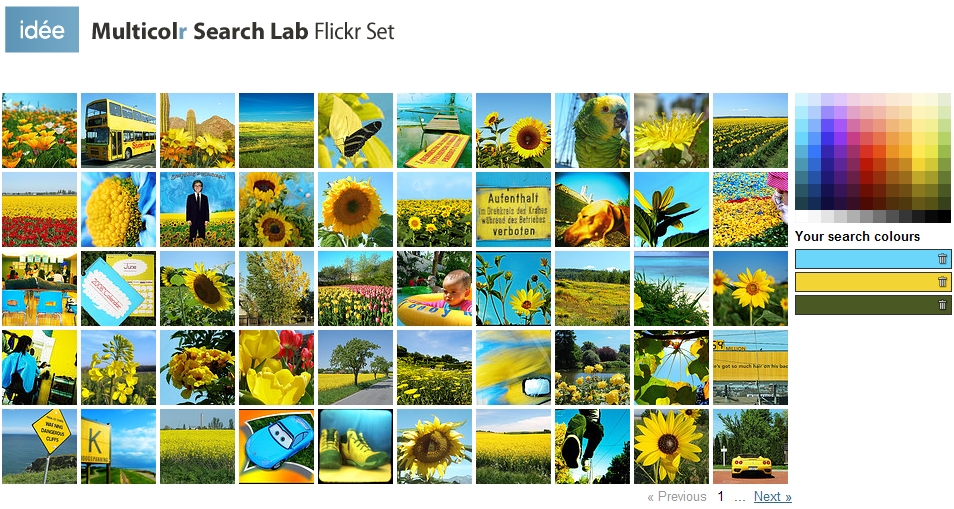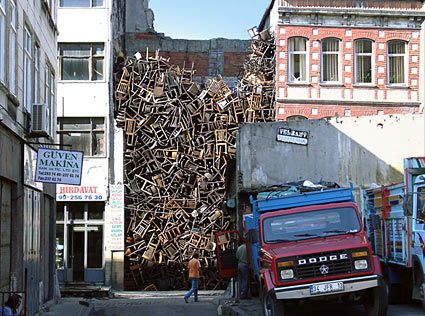There are plenty of brands of carbonated beverages that have all made the surface areas of cans artwork. It's a unique 3D form that opens up endless possibilities for looped imagery and vibrant colors to set it apart from other brands. The artwork on a pop can is reflection of the times and the product. Your average Coke design never strays too far from its roots. Stylized script font and basic color scheme have endured the test of time. Remember when they tried "New Coke"? The reaction was bigger than the recent Facebook profile design uprising of aught nine?
Pepsi kept its basic logo similar for a long period until they went all "New Generation" and started to overwrite the red, white, and blue with mostly blue. In an effort to distinguish itself from the king, Pepsi made a decision that was not only daring, but transcended the color tradition of pop flavors. The decision was also Pepsi's "Curse of the Babe" in ever hoping they could catch up with King Coke. Admittedly my "color legend" of pop types comes from a Canadian upbringing, but from what I've seen things aren't too different in the US. I hesitate to think any of these standards may match up with the common scheme overseas.
The Pop Can Color Archetype
Red - Cola... there is no doubt that when some historical decision was made for Coke to adopt it's color scheme, it became the archetype by which all other colas would be measured. It's still hard to find any brand of cola that is not predominantly branded red... although some have started to try and go Pepsi blue.
White - Diet Anything... although recently taken over with some brands by grey (and light blue with Diet Pepsi), white was the defacto standard for many years when dealing with any diet pop. It was basically analogous to a sports team's home and away jerseys.
Brown - Root Beer... I recall Hires, A&W, now Mug. For some reason I suppose the idea of the word "root" and the color of dirt was too good to pass up.
Dark Green - Ginger Ale... strange that even though Ginger Ale is a golden amber color the dark green was adopted. I remember it mostly from Canada Dry, but the standard was also adopted by Schweppes and several others. Also picked by Mountain Dew during some of its many generations.
Light Green - Lemon-Lime... I suppose Sprite and 7-Up were the predominant memories on this one, although they have modified to add blues and greys over the past few years, the green to light green patterns are still evident, often reflected with the plastic bottle in larger sizes.
Dark Red (Cherry Red) - Cherry Cola... seems obvious and is even upheld by the Dr. Pepper brand which echoes the hints of a cherry cola.
Orange - Orange... yeah, well, some have to be obvious don't they?
Blue - Club Soda... I know it sounds silly, but until Pepsi adopted the blue for their mass marketing, the rare pop can you ever saw that was blue contained Club Soda. I don't know what club one had to belong to to pay hard-earned money for tasteless carbonated liquid, but I didn't want to join.
Yellow - Tonic Water... similar to Club Soda in it's rare appearance in homes and even on store shelves. Yellow has also been co-opted by indie drinks like Mellow Yellow, but for years was rare in the pop aisles.
Gold - Caffeine Free... yeah, I know that many Ginger Ale's have taken gold for diet versions or often bottled versions if the bottle remains green, but growing up the first instances I remember of gold popping in were when the caffeine-free versions of cola started to hit the shelves.
Purple - Grape... pretty self-evident. I can't even attest as to whether the grape flavor in grape pop is made with purple or green grapes, but I'm willing to stipulate if you are.
Pink - Cream Soda... I'm not quite sure where this matchup came from. Sure, I know that the pop is colored in the same fashion, but that's usually an after the fact decision. Maybe they were simply running out of colors.
Grey - The new white. The steelish look reflects light better and gives an aire of sophistication to diet beverages... not really, I just made that up.
The color archetype of the pop can is important in the life cycles of branding. If you're going to hook young children on these beverages before they can read, they'd better be able to associate color and design. That Pepsi broke the chain in their blue- themed "generational" campaigns may have not spelled out their doom, but showed a willingness to succumb to the power that has become the gold (or should it be "red") standard of pop can iconography.
Of course I've never forgiven the pop manufacturer's consortium for breaking away from the perfect venn diagram of the two-holed pressure release can opening system. The perfect evolution of the pull tab and the elegant ancestor of the pop tab, the pressure release system was a masterful piece of carbonated beverage engineering. Damn you soda pop manufacturing concerns. May your agitated containers be explosively opened before they resettle.








